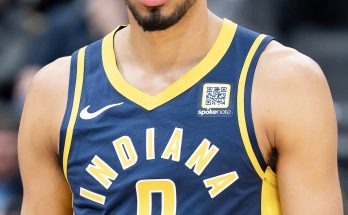The Tennessee Titans entered the 2025 offseason with more questions than answers. Following a disappointing 2024 campaign that exposed significant holes in both their roster and organizational direction, this was supposed to be a turning point—a moment of aggressive reconstruction. Instead, the Titans’ offseason has been marked by hesitation, missed opportunities, and puzzling decisions that may keep them entrenched in mediocrity for yet another year.
With a young quarterback in Will Levis entering a crucial developmental phase and a fanbase hungry for progress, expectations were high for the Titans to capitalize on a strong free-agent class and a deep draft pool. General manager Ran Carthon was expected to be aggressive in plugging roster deficiencies, particularly along the offensive line, wide receiver corps, and secondary. Unfortunately, the moves that weren’t made loom larger than those that were.
Perhaps the most glaring misstep came in free agency. The Titans entered with ample cap space after clearing significant salary from aging veterans and underperforming contracts. However, they failed to bring in any high-impact players to complement their young core. With an offensive line that struggled mightily in 2024—ranking among the league’s worst in both run-blocking and pass protection—it was assumed Tennessee would pursue top-tier free agents such as guard Robert Hunt or tackle Jonah Williams. Both signed elsewhere, and the Titans’ only notable acquisition up front was a rotational-level lineman with little starting experience. For a team that gave up 64 sacks last season, this lack of urgency is baffling.
On the offensive side of the ball, the Titans also passed on a golden opportunity to bolster their receiving corps. While they made a splash last year by acquiring DeAndre Hopkins, the 32-year-old veteran can’t shoulder the load alone. With Calvin Ridley, Mike Evans, and Tee Higgins all either available or rumored to be on the move, the Titans had a chance to pair Levis with a dynamic, younger wideout who could stretch the field and grow alongside him. Instead, Tennessee stayed quiet. Their lone receiving addition came late in the free-agency cycle and was more of a depth piece than a difference-maker.
The inaction in free agency might have been forgiven had the Titans maximized their picks in the NFL Draft, but once again, questions abound. Holding a top-10 pick, Tennessee had a chance to grab a blue-chip offensive lineman or an elite receiver in a deep class. When the moment arrived, they surprised many by selecting a developmental prospect viewed by most analysts as a second-round talent. While there’s a chance the player pans out long-term, it doesn’t address the immediate need to protect Levis and generate consistent offense. Other teams with similar roster needs acted decisively, whereas Tennessee appeared to be drafting based on potential rather than production.
Defensively, the team’s offseason was just as underwhelming. The secondary, torched repeatedly last season and responsible for multiple late-game collapses, remains largely intact. With quality cornerbacks like Kendall Fuller, Stephon Gilmore, and C.J. Henderson available for reasonable contracts, it’s shocking the Titans didn’t invest in the position. Relying on the same unit that ranked near the bottom of the league in pass defense suggests either overconfidence in internal development or a misreading of the market.
Equally confounding was the decision not to pursue a veteran presence at linebacker. The Titans’ run defense, once a strength, regressed badly in 2024. With a young defensive line showing promise, adding a savvy linebacker to clean up plays and call signals could have made a noticeable difference. Instead, the team seems content to roll the dice with an unproven group.
Special teams also received little attention, despite being a source of recurring headaches last season. Missed field goals, poor punt coverage, and inconsistent returns all played a role in the Titans’ close losses. Other franchises moved swiftly to secure reliable kickers and returners, while Tennessee remained stagnant. It’s hard to see this as anything other than another area where opportunity passed them by.
Beyond personnel decisions, there’s also the matter of coaching. While head coach Brian Callahan enters his first year with optimism, there were chances to surround him with more experienced coordinators. Several seasoned offensive and defensive minds hit the market, yet the Titans opted for continuity and youth over proven expertise. This approach could pay dividends if the staff gels quickly, but it carries significant risk for a team that can’t afford to spin its wheels.
Another area of concern was Tennessee’s failure to explore trade options aggressively. Around the league, teams were making bold moves—acquiring Pro Bowlers for mid-round picks, packaging assets to jump up in the draft, or clearing cap space to land stars. The Titans, however, were conspicuously absent from the rumor mill. Whether it was a reluctance to part with draft capital or a lack of urgency, the result was the same: a front office seemingly content to watch the action from the sidelines.
Perhaps the most frustrating element of the offseason has been the mixed messaging. Public statements from the team suggest they’re in win-now mode with Levis under center and foundational pieces like Jeffery Simmons and Harold Landry still in their primes. But the roster moves—or lack thereof—point more toward a slow rebuild. This inconsistency makes it difficult to assess the team’s true direction and leaves fans wondering if there’s a coherent plan in place.
Meanwhile, division rivals have shown far more ambition. The Jacksonville Jaguars added firepower to their offense and reinforced their secondary. The Indianapolis Colts, with a budding superstar in Anthony Richardson, bolstered their pass rush and offensive line. Even the Houston Texans continued their rapid ascent by making smart, targeted acquisitions. In contrast, the Titans’ offseason felt passive, as if they were content to let the chips fall where they may.
It’s also worth noting how little Tennessee has done to energize the fanbase. After several years of inconsistent results, dwindling attendance, and fan frustration, the 2025 offseason offered a prime opportunity to reset the narrative. A major signing or bold draft-day move could’ve reignited enthusiasm and shown that the team was serious about competing. Instead, the lack of flash—and more importantly, substance—has only deepened skepticism.
The Titans’ front office may argue that internal development is the key and that patience will be rewarded. That may be true in isolated cases. Will Levis has shown flashes, and second-year players like Peter Skoronski and Tyjae Spears could take a step forward. But banking the success of an entire season on internal growth without surrounding that growth with proven, reliable talent is a dangerous gamble. NFL windows close quickly, and teams must strike while they can. Tennessee had chances to do just that this offseason and let them slip by.
In the modern NFL, the margin between contenders and pretenders is razor-thin. Successful teams are the ones that seize the moment, address needs decisively, and build aggressively around their young quarterbacks. The Titans had the resources, the draft capital, and the opportunity to make meaningful upgrades this spring. Instead, they chose a more cautious, conservative path that may leave them lagging behind in a division full of ascending teams.
Now, with training camp looming and roster questions still unanswered, Tennessee faces an uphill climb. The hope is that new coaching voices and returning players can create unexpected cohesion, but hope alone isn’t a strategy. In a league defined by boldness and execution, the Titans’ offseason feels like a chapter marked by hesitation and indecision.
There’s still time for adjustments—camp cuts, surprise trades, and waiver wire pickups can alter a team’s trajectory—but the heavy lifting of the offseason is over. The Titans had a clear opportunity to reshape their roster and reassert themselves in a competitive AFC South. Instead, they watched as opportunity after opportunity passed them by, each one a reminder of what could have been.
Whether these missed chances will define the 2025 season remains to be seen. But if the Titans once again fall short of expectations, the blame will not rest on bad luck or unfortunate injuries. It will rest squarely on an offseason that demanded action—and received too little in return.



